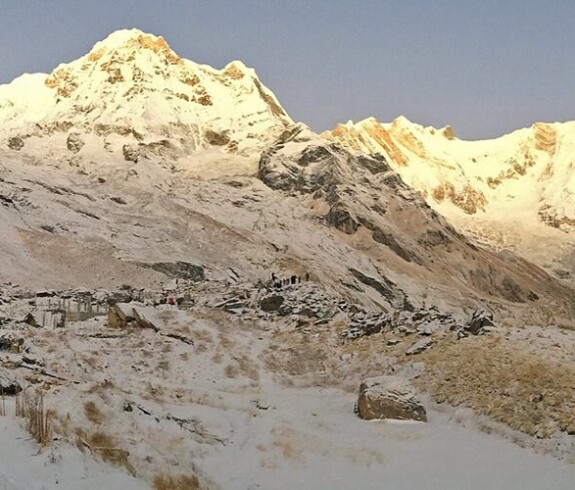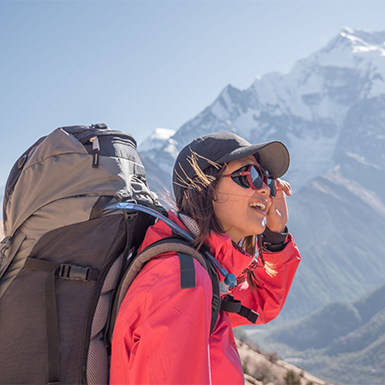Annapurna Base Camp Trek is a dream destination for every trekker from all around the world. But trekking to the world’s tenth mountain base camp, Mt. Annapurna, is difficult.
The Annapurna Base Camp trail goes through diverse terrains full of ups and downs. Plus, the altitude brings up different hurdles along the way. The Annapurna Base Camp Trek difficulty is moderate.
But the journey to the base camp, conquering all the Annapurna Base Camp Trek difficulties, is a lifetime experience. The ABC trek is quite demanding, but with proper preparation and a positive mindset, this trek is suitable for all age groups.
So, how difficult is the Annapurna Base Camp Trek?
Annapurna Base Camp Trek may not be considered a difficult trek because many other treks in Nepal beat the ABC trek in this matter. The difficulty level of the Annapurna Base Camp trek can be considered a moderate trek.
These 14 days, Annapurna Trek embarks from Nayapool, situated at an altitude of 1070m, taking you all up to 4130m at the Annapurna Base Camp itself. Trekkers who are physically and mentally fit to walk for 6 to 7 hours a day can easily conquer this trek.
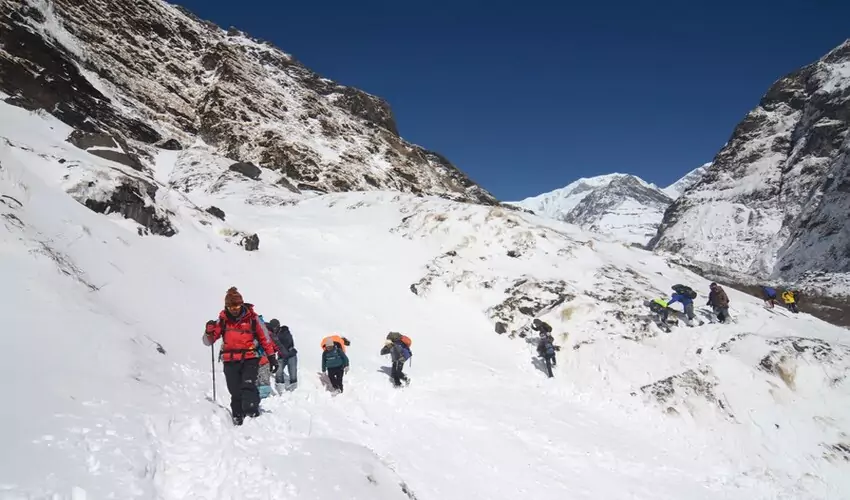
1. Difficulty due to the Duration and Distance of the Trek
Annapurna Base Camp trek distance is around 115km, usually taking around 10 to 15 days, depending on the itinerary. You will be covering around 10 to 15km per day.
The Annapurna trail is comparatively easier than other treks like Annapurna Circuit Trek and Everest Base Camp Trek. Enjoy the trail’s beautiful mountain views, rich flora, and fauna. However, the rocky terrains on the trail can be a bit challenging if you are a first-time or novice trekker.
The trails will be covered with snow if you are trekking in the winter. Thus, it will be more complex and challenging than trekking in other seasons.
On average, you will walk 6 to 7 hours daily on the trek. If you are an experienced trekker, it is pretty easy for you. But it may be problematic and uncomfortable for those trekking in Nepal for the first time.
You may customize the trek according to your preferences. Some people may shorten the trek and go for a Short ABC Trek, and some may elongate the trek.
If you are a first-time trekker, we recommend choosing a more extended package, as you will have time to rest correctly and enjoy the trek. We have a perfect Annapurna Base Camp trek itinerary for beginners.
Related Article
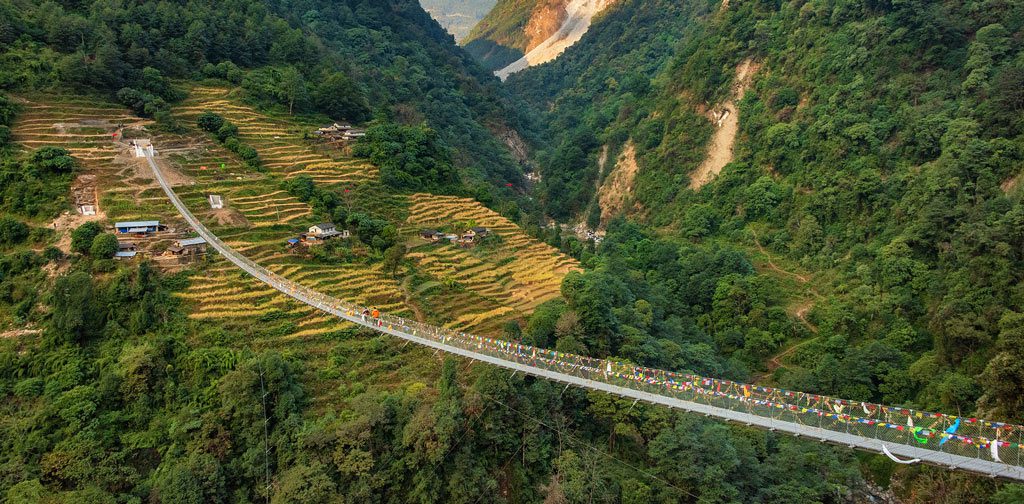
2. Difficulty due to Altitude and Altitude Sickness
Altitude Sickness is the primary difficulty while going on high-altitude trekking in Nepal. In this Annapurna Base Camp Trek, you will trek up to 4130m at the base camp. Trekking to such a high altitude is not as easy as you think.
Trekking to higher altitudes is full of challenges. The weather and temperature conditions in the high-altitude area never remain stable. Along with that, the air gets thinner. Thus, walking in such a condition can be very difficult.
With increasing altitude, oxygen and atmospheric pressure start to get lower and lower. Thus, there is a very high chance of altitude sickness while trekking to Annapurna Base Camp. The common symptoms of altitude sickness are nausea, diarrhea, headache, loss of appetite, insomnia, etc.
Hence, drinking alcoholic beverages is highly prohibited during the trek. Don’t rush on the trail, and walk slowly and steadily. Always keep yourself hydrated and take enough rest. Keeping safety precautions in mind, the ABC trek is a lot easier.
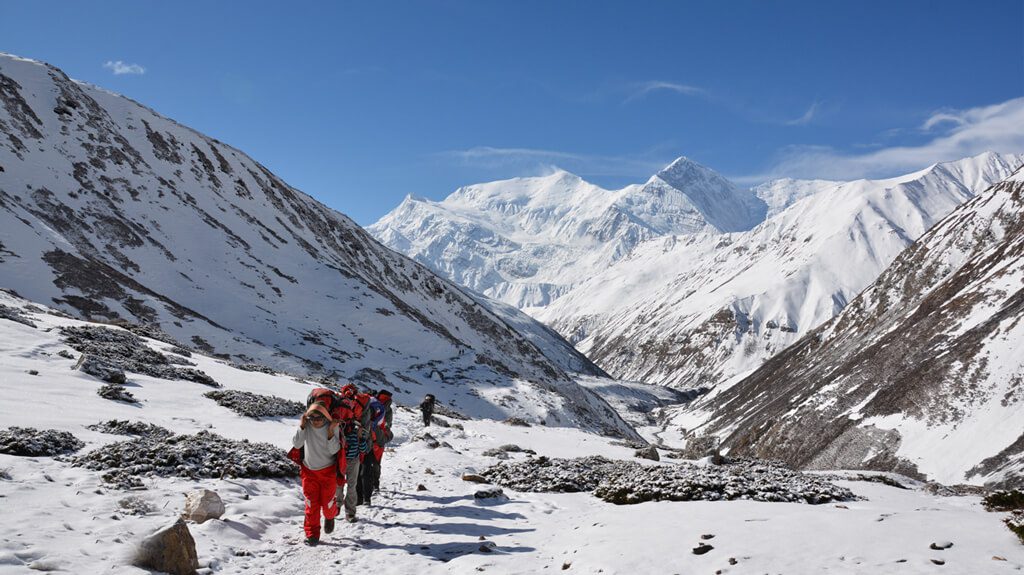
3. The Budget Management Difficulty
Trekking in Nepal is very cheap compared to traveling anywhere else. So is the Annapurna Base Camp trek. This trek is quite an affordable trekking destination in Nepal.
However, the cost of the Annapurna Trek can vary depending on the duration of the trek, the type of trek, the trekking route you choose, etc.
There are no roads for transportation, so supplying goods in the mountainous region is complicated. All the goods are transported via mules and porters. Thus, basic facilities can be three times costlier than in Kathmandu.
However, once you get to the Annapurna Base Camp Trek wilderness, the cost you paid for the facilities seems fair. Also, the price gets higher as you go to a higher altitude.
Also, getting enough hand cash before going on the trek is necessary. There are no ATMs on the trail.
You might have difficulty buying food and water bottles if you don’t carry enough hand cash along the trek. It isn’t easy to find ATMs on the trek route.
Related Article
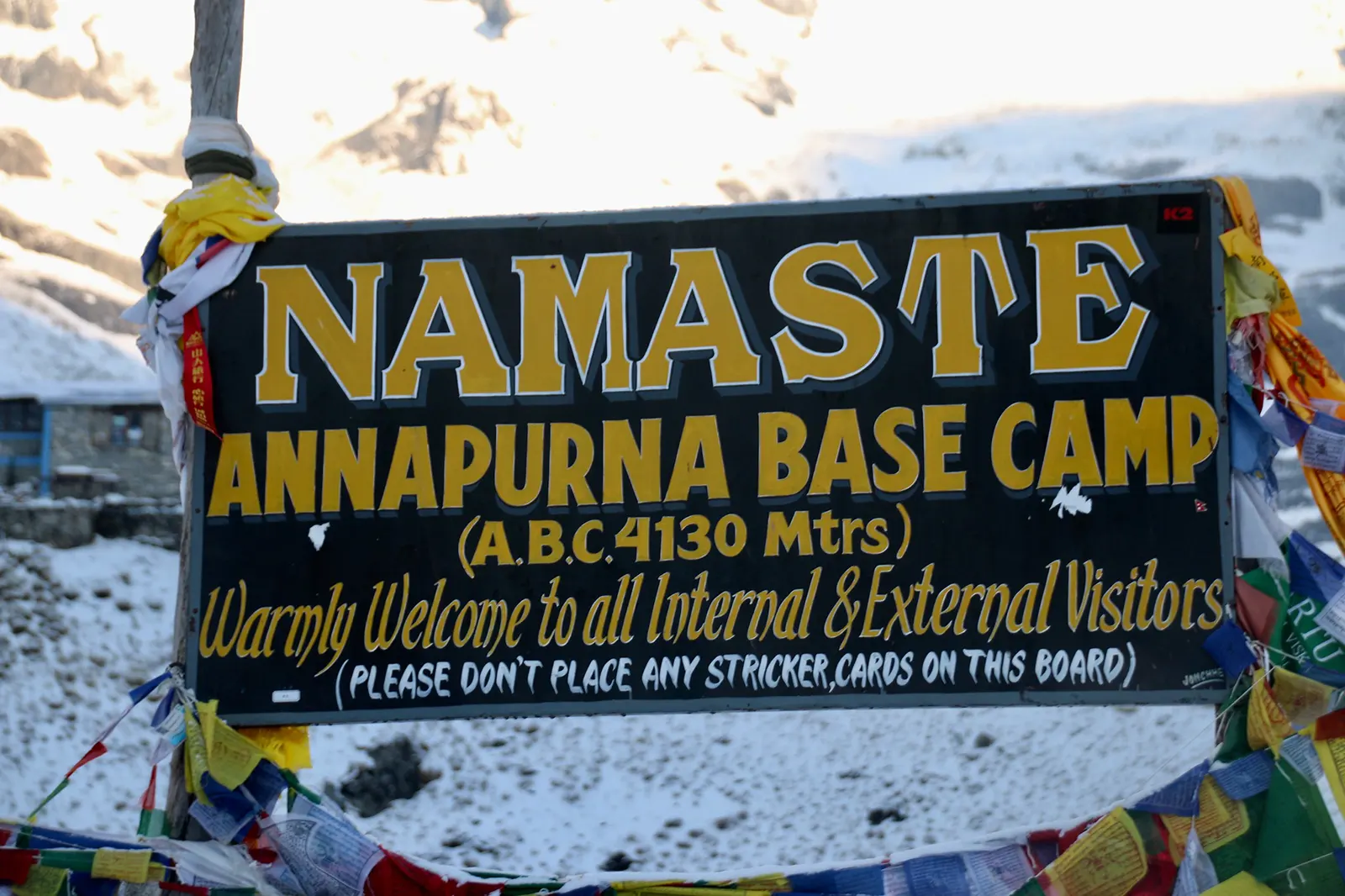
4. Annapurna Base Camp Trek Difficulty
The Annapurna Trek has varied landscapes so you will walk through some rugged trails. The trails in the mountainous region are not as smooth as you may think. You will walk through many ups and downs on the trail, which may add to the Annapurna Base Camp Trek difficulty level.
This trek does not require any specific level of physical fitness. You don’t have to be a pro athlete or experienced trekker to do this trek. However, trekking through the tiring ups and downs requires stamina and patience.
Most trekkers usually feel exhausted during long treks. This is a common problem while trekking in such diverse terrain. You will walk through difficult trek sections, like the 3300-steep stone steps. Thus, you will require good physical fitness and stamina to overcome these difficulties.
So, it would help if you trekked wisely. Always know your limits. Have proper acclimatization and rest days. Have a proper diet. Walk slow and steady, and don’t try to attempt a long walk. And always keep yourself hydrated.
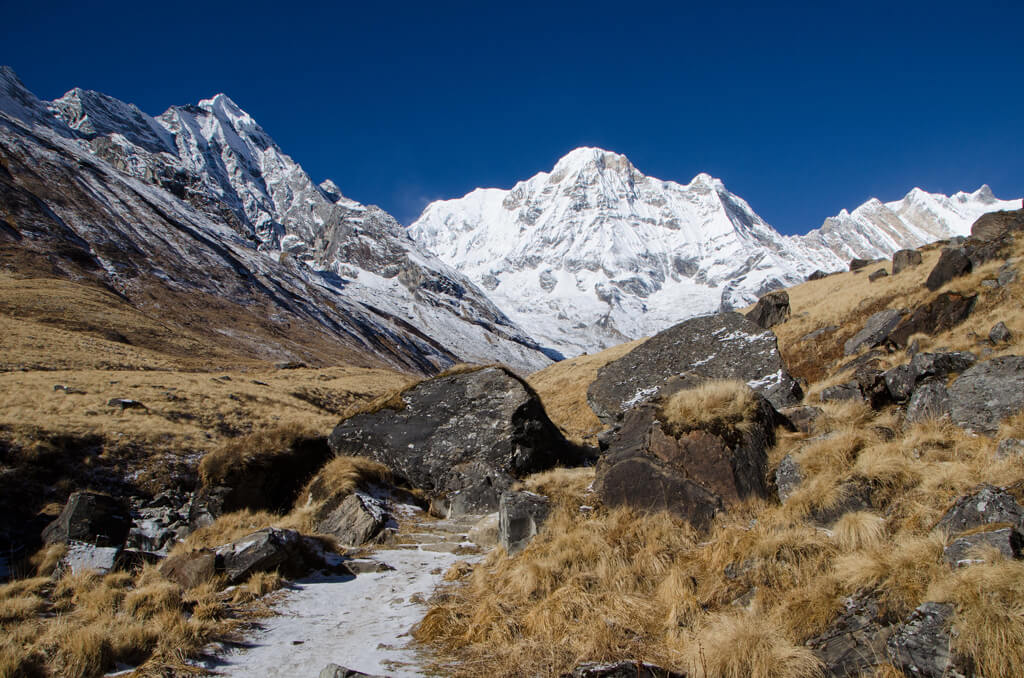
Annapurna Base Camp Trek Difficulty In Different Seasons
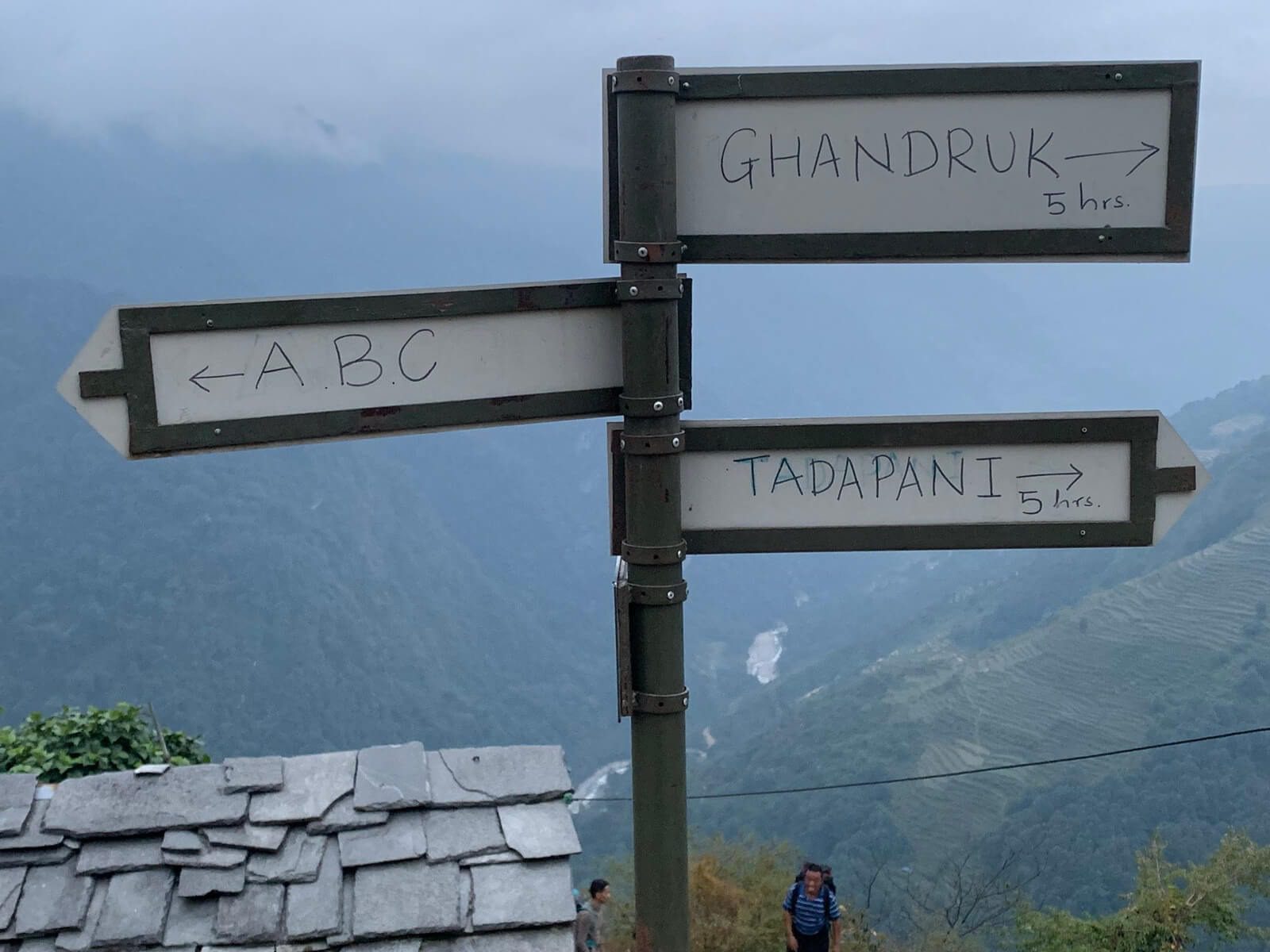
1. Difficulties during Autumn (September, October, November)
Autumn is considered the best time to trek to Annapurna Base Camp and any other trek in Nepal. Although trekking during autumn offers perfect weather and temperature condition for trekking, you may still face some difficulties:
- Since Annapurna Base Camp Trek is peak time, the trails are highly crowded during autumn. Thus, if you want to trek in solitude and peace, autumn is not the right time to trek.
- It is tough to arrange accommodation and food during autumn. Thus, pre-booking is a must if you trek in the autumn season.
- Also, accommodation and food costs are relatively lower than in the offseason.
2. Difficulties during Winter (December, January, February, March)
As the winter kicks in, the Annapurna regions get very cold. Thus, trekking to Annapurna Base Camp in Winter is very challenging. So, before deciding to trek in winter, you must think carefully and prepare well to face the challenge.
Here is a list of some challenges that you may face during the winter season:
- Since the higher altitude temperature gets below freezing, it can snow anytime. Also, the weather can vary drastically in winter.
- The higher altitude trails are usually covered with snow; walking on snow can be challenging and exhausting.
- The Annapurna regions get pretty cold during winter. Also, the sunlight is not as warm as in other seasons. Thus, always keep yourself warm, especially at night.
- One of the biggest challenges you may face is the risk of avalanches while trekking to the Annapurna Base Camp in winter.
Related Article
3. Difficulties during Spring (March, April, May)
Spring is the second-best season for Annapurna Base Camp Trek. Here are some of the difficulties you may face while trekking to ABC in Spring:
- The trails are always crowded and noisy as spring is the peak season.
- Finding accommodation in spring can be very difficult. If you are a solo trekker, it will be impossible to find a solo room. So, pre-booking is highly recommended.
- The higher altitude regions are still icy during early spring.
- You may face a few rainfalls if you are trekking in late spring. There are even chances of blurred surroundings.
4. Difficulties during Summer/ Monsoon (June, July, August, September)
Summer/Monsoon is the offseason for Annapurna Base Camp Trek. Since the region gets very hot and downpours are frequent, most people don’t prefer to trek in Summer/monsoon.
But if you have decided to trek to Annapurna Base Camp in the monsoon, then here are some of the difficulties you may face along the trail:
- The days are sweltering and humid in the lower regions, making it challenging to trek during the daytime. You will feel hot and will get more sweaty.
- Since there is frequent rain, the trekking trails get very wet and slippery. So, be careful while walking.
- You will walk through various sections with risks of avalanches or mudslides.
- The weather is foggy so you won’t get a good view of the Himalayan vistas.
- The rain can continuously fall for a few days. Thus, you may not enjoy the trek.
- Leeches and summer bugs add difficulties to the trek. Take table salt and insect repellents.
Trekking Gears to Avoid Annapurna Base Camp Trek Difficulty
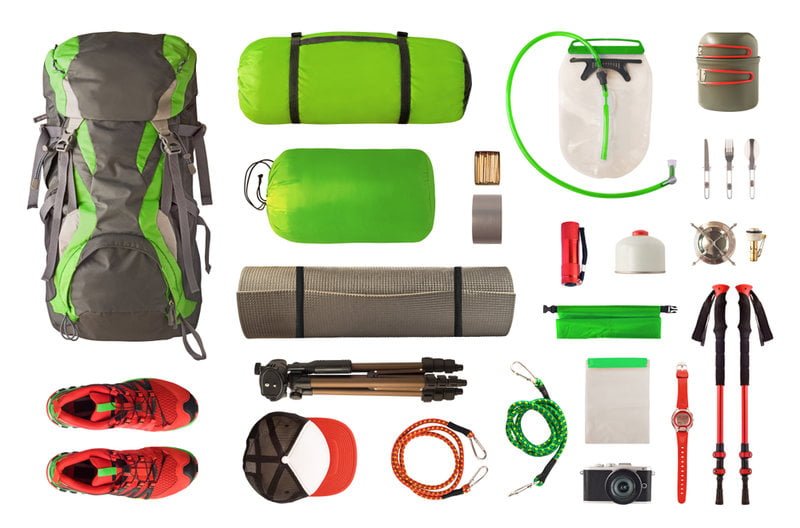
1. Clothing
The weather and temperature in the mountains never remain constant. It is constantly changing. Most of the season, the morning and night are colder, while the daytime gets warm. Thus, wearing your clothes in a layer can help you tackle the weather.
This is the list of clothing that should be carried on your trek.
- Hiking underwear
- Hiking shirts
- Trekking socks
- Trekking pants
- Rain Jacket and rain trousers
- Lightweight down jackets
- A pair of trekking boots
- A pair of gloves
- A pair of hiking sandals
- A sun hat
2. Other accessories
- Trekking Poles
- Headlamp and batteries (for night walk)
- Watch with the alarm clock
- Polarized sunglasses
- Sleeping bag with a liner (for extra warmth)
- Cameras and batteries
- Battery chargers
- Some extra batteries
- Energy bars or chocolates
- Water Bottle
- First aid kit and some medicines (for altitude sickness, diarrhea, cold, nausea, and many others)
3. Hygiene and toiletries
- Sunscreen
- Moisturizer
- Lip Guard
- Eye drops
- Nail cutters
- Shampoo
- Soap
- Towel
- Toilet Paper
- Hand sanitizer
- Toothpaste and toothbrush
4. Important Documents to carry at all times
- Passport
- Permits
- Enough cash (most places do not have ATMs)
Some Useful Tips on Annapurna Base Camp Trek Difficulty
- Walk at a slow and steady pace. Take enough rest and acclimatize properly.
- Drink enough water and always keep yourself hydrated. Avoid smoking and alcohol during the trek.
- Do proper training before the actual trek. Work on your stamina and mental fitness to walk on the rugged terrain of the Annapurna region.
- Always be aware of food and water hygiene. Try to avoid unclean foods and drinks during the trek.
- Take your time to acclimatize. Make a proper acclimatization schedule. Acclimating is crucial for a successful trek.
- Wear a kneecap if you have knee problems. The frequent walks uphill and downhill are killing.
- Take some energy bars or chocolates. A first aid kit with essential medicines is a must.
Conclusion
The Annapurna Base Camp trek is a moderate-level trek. This trek is perfect for trekkers of all age groups. With proper training and strong willpower, you can beat every Annapurna Base Camp Trek difficulty that might come along. This trek is a lifetime kind of experience.
Please contact us for more information or check out our blog on “Annapurna Base Camp Trek FAQs.”
